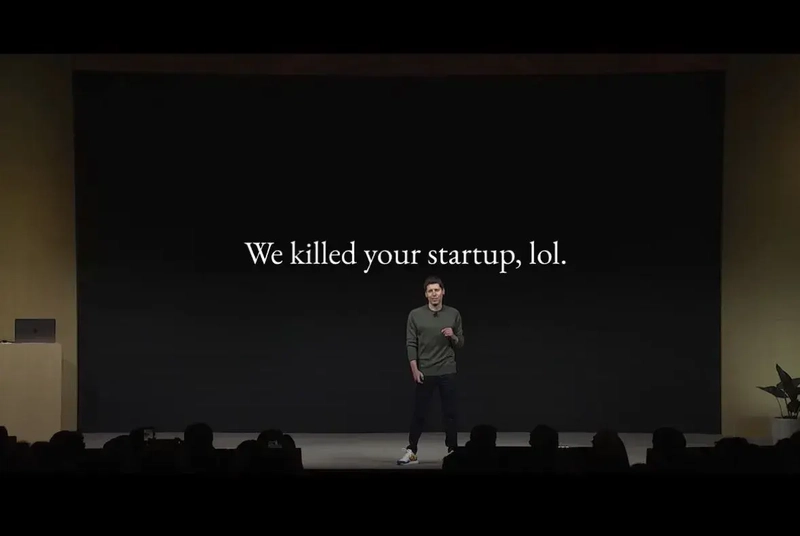If you thought the AI gold rush was over, buckle up. At OpenAI DevDay 2025, the company didn’t just drop some new toys — it signaled a tectonic shift in how software will be built, deployed, and consumed. The phrase “AI kills startups” might sound dramatic, but with tools like AgentKit and visual agent builders now in the wild, the next wave of disruption is arriving faster than you think.
Here’s what went down — and why every founder, dev, and AI skeptic should pay attention.
🔥 What Went Down at DevDay 2025
OpenAI’s third annual DevDay happened October 6, 2025 in San Francisco, with a livestream for remote viewers.
OpenAI
The stage was primed not just for incremental updates, but for structural change.
Some of the headliners:
AgentKit: A full-stack platform for building, deploying, and optimizing autonomous agents
Agent Builder: Drag-and-drop visual workflow design for AI agents (the “Canva for agents”)
ChatKit: Embeddable chat UI components tied to agent logic
Updated Codex & API Tools: More ways to embed code gen, integrate enterprise toolchains, and manage development pipelines
Apps in ChatGPT (SDK Preview): Third-party apps can now live inside ChatGPT—Spotify, Canva, Zillow demos shown on stage
New models & tools: Sora 2 for video generation, GPT-5 Pro in API, gpt-realtime-mini for cheaper voice models
In short: this was not a feature update — it was a reboot.
AgentKit & Agent Builder: The Weapon You Didn’t See Coming
Let’s zoom in on the marquee reveal: AgentKit, and especially Agent Builder.
What is AgentKit — really?
OpenAI describes it as:
a complete set of tools for building, deploying, and optimizing agents.
The aim is to remove the friction that typically comes with stitching together prompt logic, orchestration, connectors, error handling, UI, monitoring, etc.
Key building blocks:
- Agent Builder — Visual canvas to design agent workflows, version them, branch them, test, iterate
- Connector Registry — Centralized tool/data integration points & admin controls
- ChatKit — UI components you can drop into your apps to let users talk with your agent logic
- Evals & metrics — Trace grading, automated prompt optimization, performance datasets
One demo even showed how Ramp (a FinTech) spun up a procurement agent within hours using Agent Builder’s templates.
Why it’s dangerous (for AI startups)
- Lower barrier to entry. You don’t have to be an AI researcher anymore — non-coding orchestrations are now viable.
- Verticalization acceleration. Anyone can spin up domain-specific agents (legal, sales, HR, operations) quickly.
- Lock-in potential. As agents get more central to your stack, migrating away becomes harder (especially with proprietary connectors and behaviors).
- Disruption of “glue code” startups. Many existing tooling startups (Zapier, Make, n8n) compete here. OpenAI is stepping directly into that territory.
Andy Brown, OpenAI’s Asia-Pacific lead, revealed that Agent Builder was built in just six weeks, with ~80 % of its code written by OpenAI’s own models — a proof point of how fast internal dev can move now.
ChatGPT as an OS: Turning Apps into Conversations
Another sweeping shift: embedding apps inside ChatGPT itself.
With the new Apps SDK (preview) , developers can build apps that live within the ChatGPT interface. The idea: instead of bouncing between chat and external tools, users can invoke Spotify, Canva, Zillow, or your custom app from within the chat window.
Sam Altman, in the keynote, described this as turning ChatGPT into a kind of “operating system” — your central interface for work, life, tools.
WIRED
What this means in practice:
- Conversations morph into app interactions (e.g. “Design me a poster” → Canva app UI appears inline)
- Reduced friction in switching between context and tools
- Platform power consolidated in OpenAI’s hands (they control the app store)
- It’s a bold push—not just to offer AI models, but to host the entire experience layer.
The Other Cool Moves You Might’ve Missed
- Codex upgrades: Better integration with Slack, enterprise controls, SDKs for code generation & orchestration.
- New models: GPT-5 Pro in API, gpt-realtime-mini for voice apps (70 % cheaper)
- Evaluation tools: Across agents, new trace-level grading, prompt optimization built in.
- Enterprise focus: Lots of DevDay sessions centered on “orchestrating agents at scale” and making enterprise AI adoption smoother.
- Safety & governance upgrades (implied) — the built-in guardrails, connector registry, versioning all suggest OpenAI is pushing serious operational maturity.
What This Means for Startups, Devs & the AI Landscape
Startups building “agent tech” now compete with OpenAI (by default). If your startup’s moat is in orchestration, connectors, or UI glue, you just got a behemoth in your space.
Big advantage to those already on OpenAI’s stack. If your app or tool is built using OpenAI APIs, this shift is a net win — you can slide into AgentKit, benefit from better tooling, faster development, and tighter integration.
AI-first workflows win. The old model where you build your stack then bolt AI on is dying. Now AI is becoming the substrate. The “app logic” layer will be agentic at its core.
Faster innovation cycles. The fact OpenAI built Agent Builder in weeks using AI suggests internal dev loops are collapsing. Your competitor might launch features before you clear your PR backlog.
Lock-in is real. The deeper your product depends on AgentBuilder/ChatKit, the harder it is to shift away. You’ll have to weigh flexibility vs. speed.
New wave of vertical AI startups. Legal agents, HR agents, sales agents, research agents — the barrier is lower. Expect a flood in domain-specific agent startups.
Final Thoughts & Call to Action
DevDay 2025 wasn’t subtle. OpenAI just dropped the next paradigm shift in software: agents + conversational UI as the foundation. The winners will be those who adapt fast — either integrating these tools or inventing new patterns on top.
If you’re building anything that can benefit from autonomous behavior, now is the time to experiment with AgentKit, prototype lightweight agents, and reimagine your tooling as conversational flows, not APIs + UIs.




